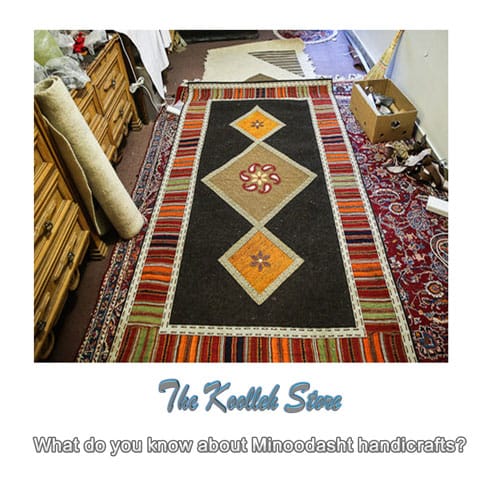What do you know about Minoodasht handicrafts?

Man has been involved in this field and has been passed down from generation to generation hand in hand, and has continued to live a valuable life from the distant past to the present. Each field of handicrafts is the crystallization of beliefs, initiative, thought, taste and creativity and the way of life of a nation.
Due to suitable living conditions, Minoodasht city has been migrating since the past. Therefore, different ethnicities live in this city, the most important of which are Ghezelbash, Fars, Sistani and Baluch, etc. Each of these tribes has its own handicrafts, the most important handicrafts in Minoodasht city are: noghandari and silk weaving, financial felt, needlework, mat weaving and kilim weaving and carpet and rug weaving.
Silk weaving:
Among handicrafts, silk weaving has the most artists in Ramyan and Minoodasht regions, and among the villagers of this region, rural women work as noghandari and silk weavers.
According to historical documents, the first country to enter the silk industry was China. And this time has been recorded by historians 2650 BC. The passage of the Silk Road through Iran, through which Chinese silk cargo was transported to European countries, led to the spread of the Noghandari industry in Iran. Favorable biological and geographical conditions for silkworm breeding have led to the development of silkworm industry and silk production in Minoodasht region and its continuation.
Silk weaving in Minoodasht city is the same as the old style and uses basic tools. And women work more than men than weavers and silk weavers. Until a few decades ago, silk fabrics were the most common clothing of the people of Minoodasht, especially women, but now some women use local clothes in ceremonies and celebrations, and the most important uses of silk products are in births, weddings, circumcisions and death. .
Its main use is the weaving of silk fabrics and sewing clothes with soft and cool fabrics suitable for the summer season and also used as insulation in the layer of winter lizards.
Types of traditional silk hand-woven items are: types of shawls and scarves – types of night tents – types of handkerchiefs – types of scarves – types of ribbons – types of carpets and …
Felt:
Due to the favorable weather conditions and climate in this city and the existence of pastures and pastures, animal husbandry and sheep breeding is very important, and therefore the conditions for felting are ready. Therefore, in most of the villages of Minoodasht city, felting is common and females are more involved in felting in spring and summer after picking sheep wool.
Felt is a process in which fleece can be obtained with different applications, with or without the use of dyes or dyes.
Types of felt products:
1- Light: It is a kind of felt that has a role in covering the human body and is in the form of a sleeveless torso
2- Dola felt: It is used for carpeting and sitting.
3- Felt felt, fluff felt, head felt which are used as cover, and are used by shepherds and farmers in winter.
4- Round felt or horseshoe: It is a kind of special cover for the horse, which is placed under the saddle on the back of the animal.
5- Plan
6- Felt hat
7- Shepherds’ shower or bag
8- Funeral felt
9- Turkmen pavilion felt
10- Decorative felt
11- Underlayment felt
12- Padre felt
13- Chogha felt (a kind of coating)
Chugha weaving:
This art, which dates back to about 80 to 100 years ago, has been the handicraft of the women of Qala-e-Qafeh village. Chugha is a woolen cloak that was worn on men’s clothes and had a warm aspect.
This tunic was made of black wool and its texture was like silk weaving from the same traditional machine (hole) and gord and comb, mako, pedal, pulley, trolley.

